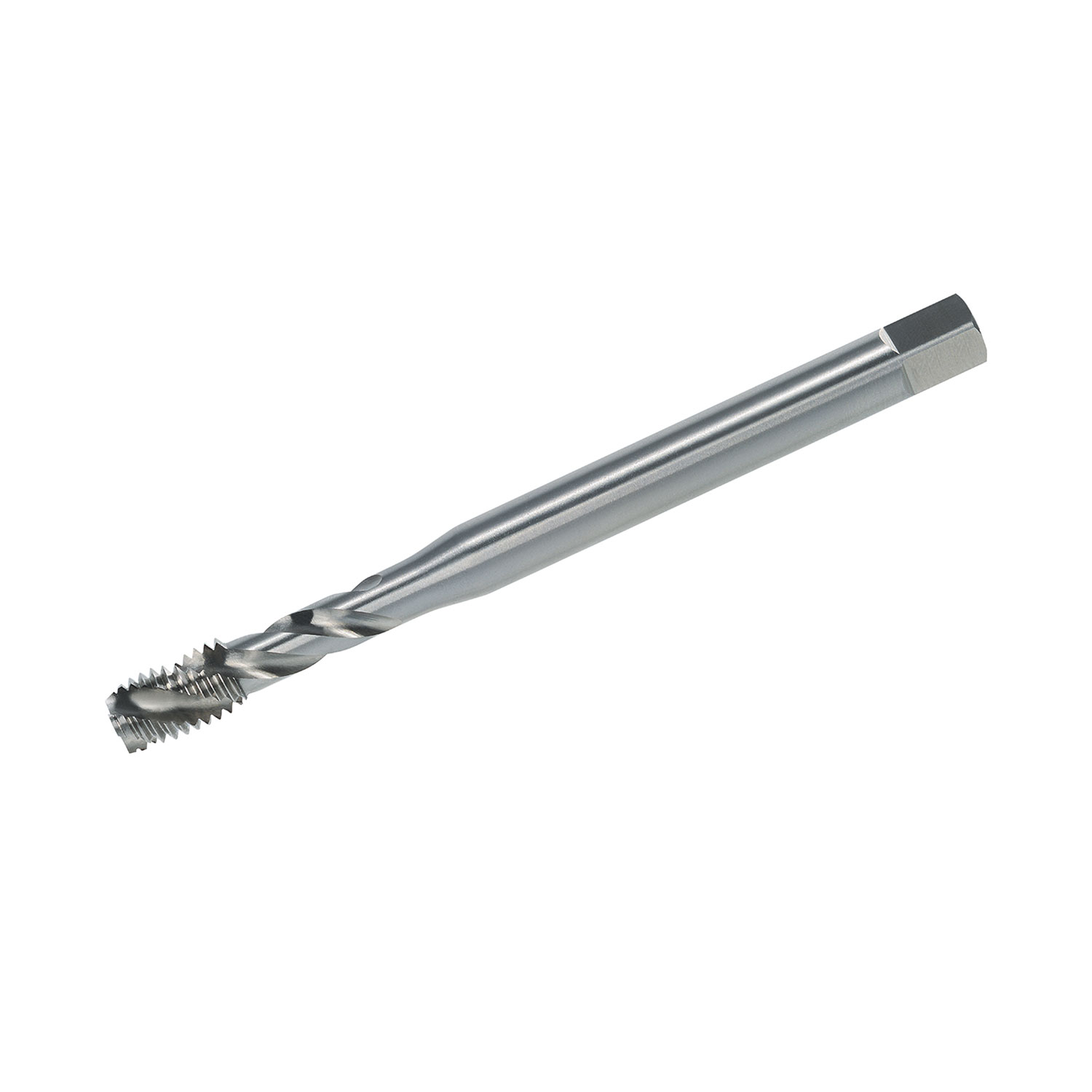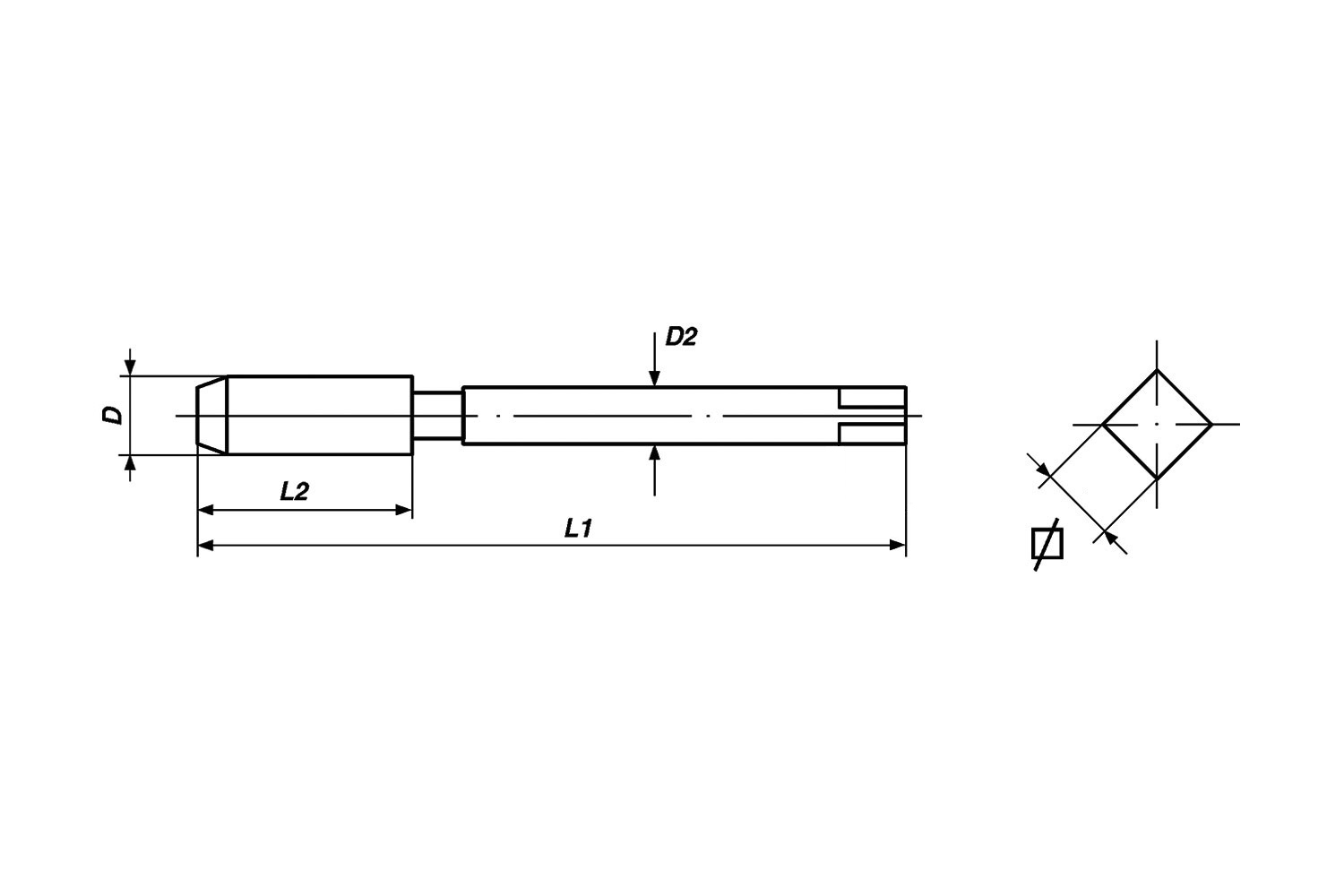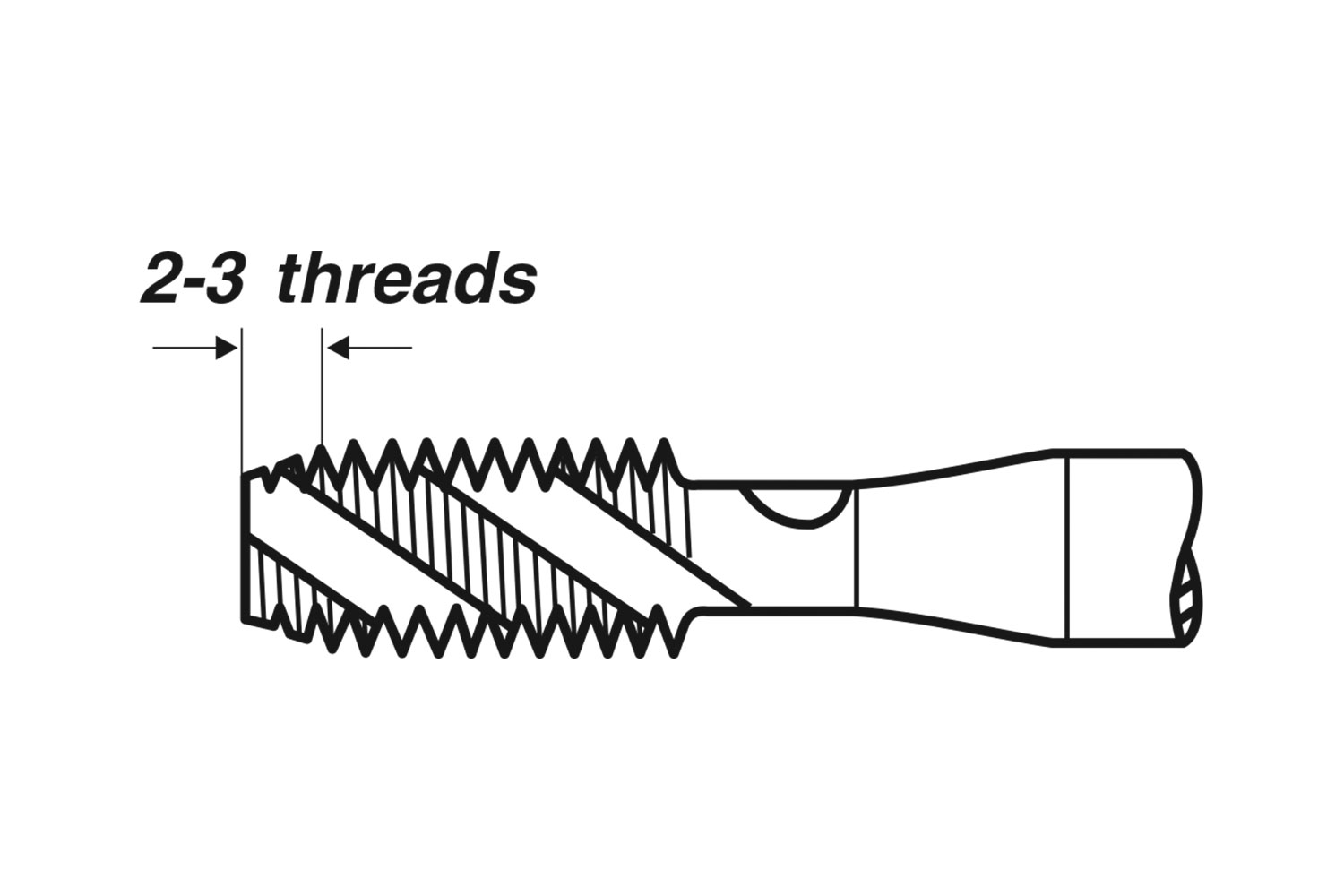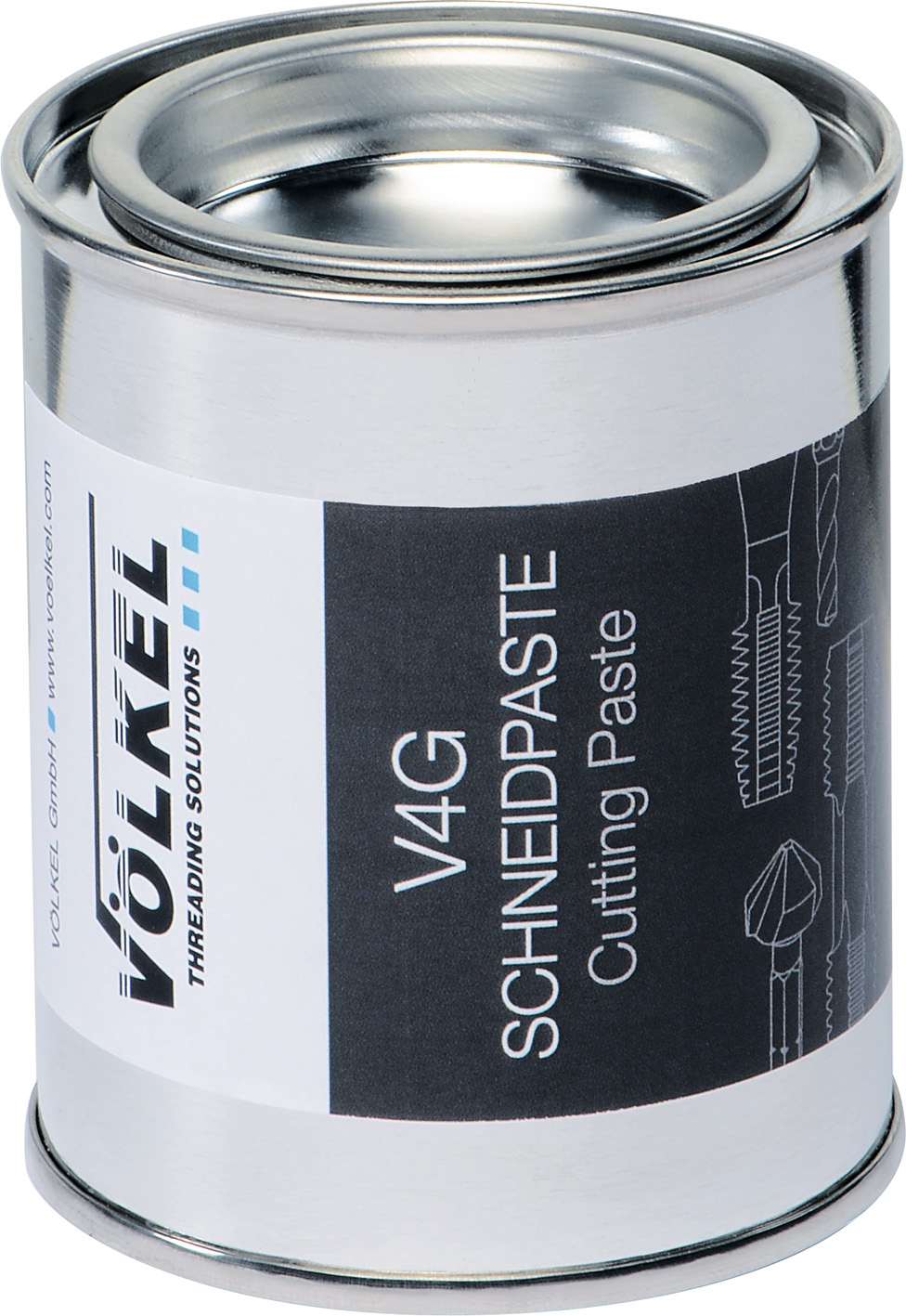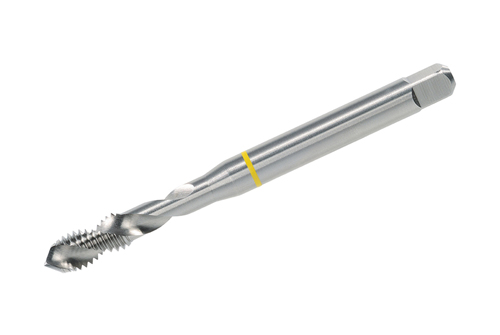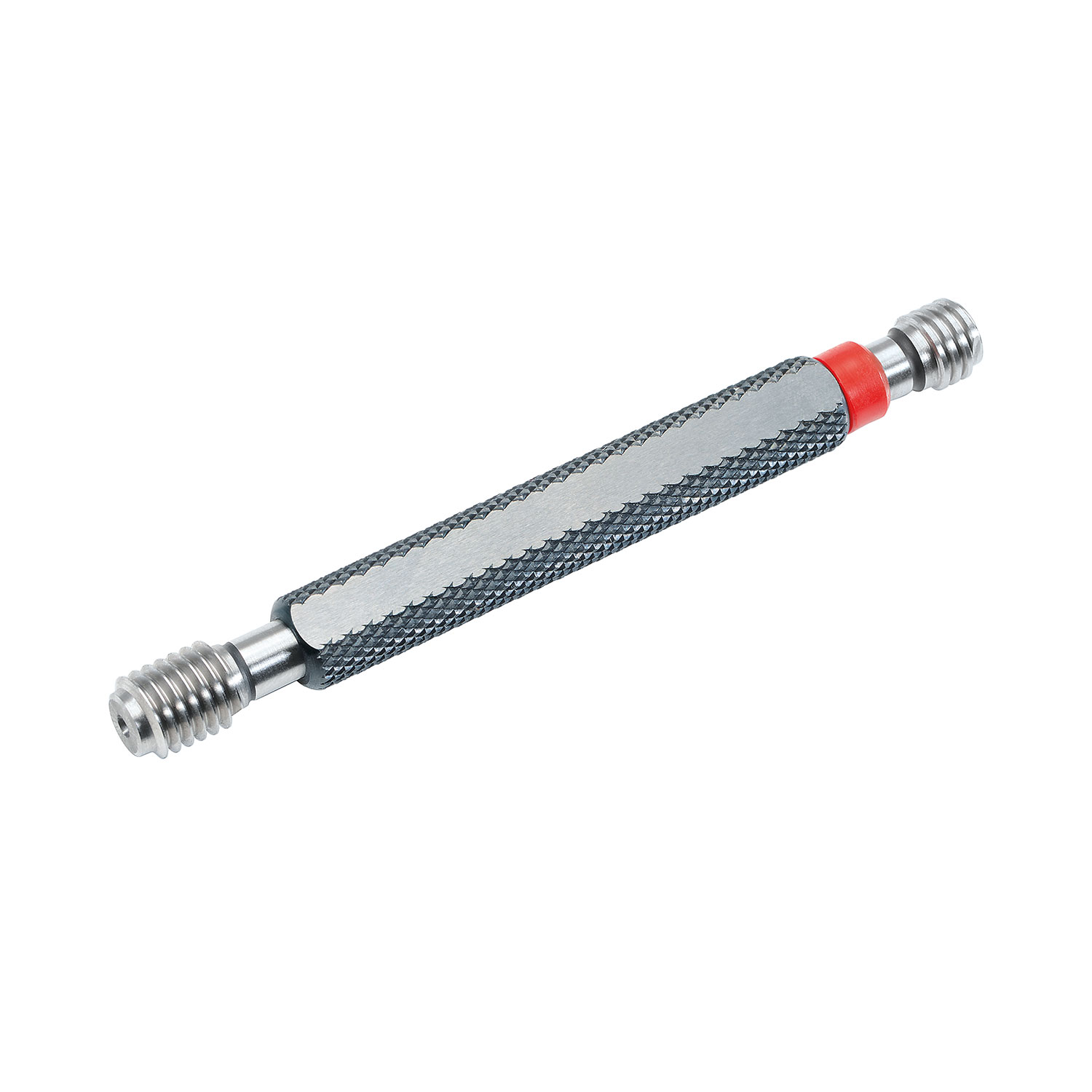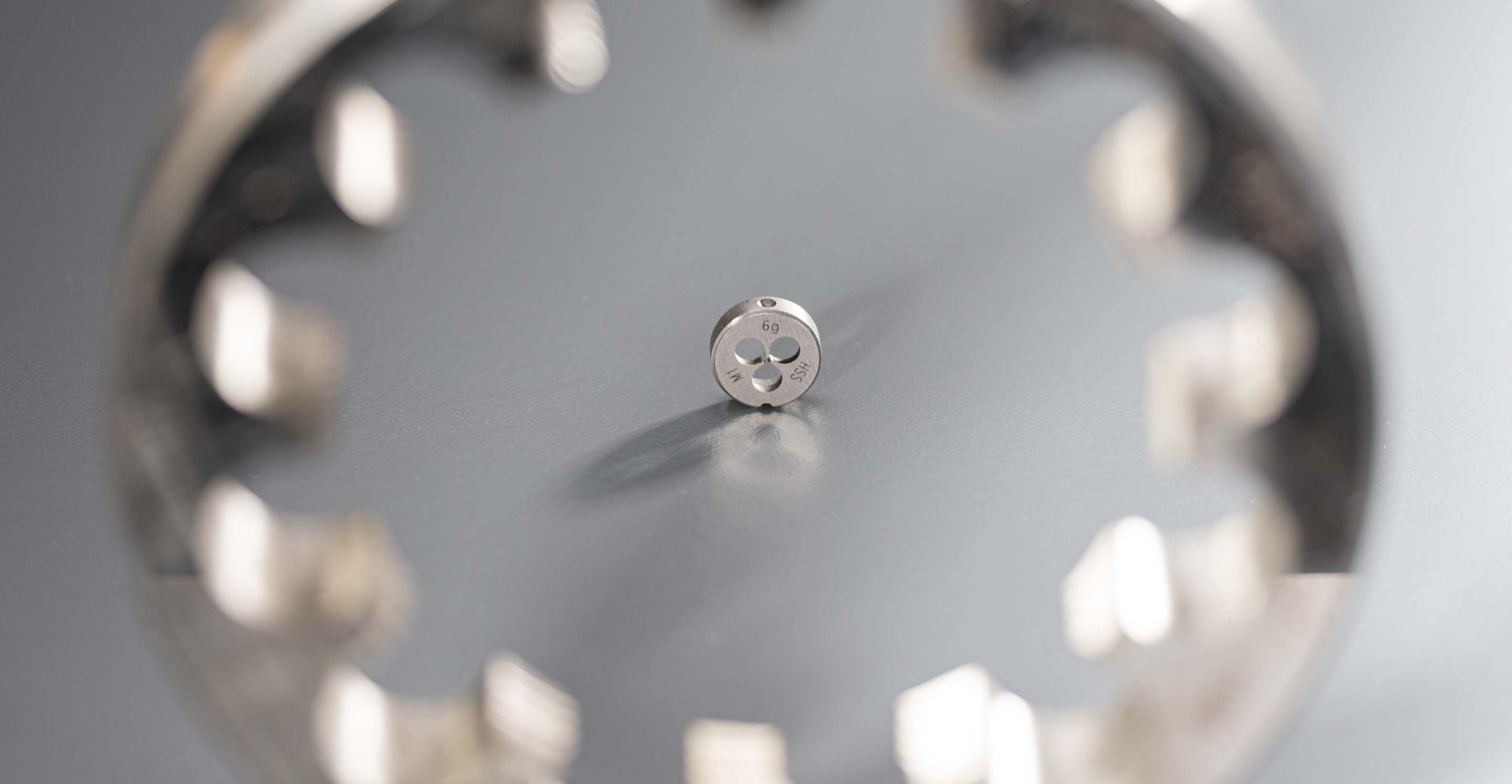Machine Tap DIN 371 Form C 35° Spiral Flute HSSE 120 mm - M 4 x 0.7
€17.60
VÖLKEL delivers exclusively to specialized dealers. Online you can buy VÖLKEL products here.
The prices are in Euro plus VAT and shipping, insurance and packaging costs.
VÖLKEL Machine Tap DIN 371 Form C: Your Specialist for Blind Holes
The VÖLKEL Machine Tap DIN 371 Form C is the perfect tool when you need to cut precise threads in blind holes. With its specialized geometry and high-quality material, it's ideal for professional applications in various materials. This tool was developed to optimize chip evacuation and provide you with a clean, fast, and efficient result.
Why this Tap is the Right One for You
This tap is specifically designed for the challenges of cutting threads in blind holes (holes that do not go all the way through the material). The key features that set it apart are:
- DIN 371: A standardized design that ensures precise manufacturing and high compatibility.
- Form C (2-3 thread chamfer): This short chamfer form is optimal for quickly cutting a full thread and facilitating chip evacuation.
- 35° Spiral Flute: The right-hand spiral geometry efficiently pushes chips up and out of the hole, preventing clogging and minimizing the risk of tool breakage.
- HSSE Material: High-Speed Steel with Cobalt (HSSE) offers superior hardness and hot hardness compared to conventional HSS, making the tool more durable and resistant.
Step-by-Step Guide: Thread Cutting with a Machine Tap
To achieve optimal results, follow this simple guide:
- Step 1: Drill the correct pilot hole. Choose the correct pilot drill for your thread (for M 4 x 0.7, the suitable pilot hole diameter is 3.3 mm). Drill the hole to the desired depth.
- Step 2: Clamp the tool. Securely and centrally clamp the machine tap in your machine's chuck.
- Step 3: Prepare lubrication. The use of a suitable cutting fluid or lubricant is crucial to reduce friction and heat and to extend the tap's service life.
- Step 4: Cut the thread. Begin the cutting process at a low to medium speed. Feed the tap slowly and without excessive pressure into the pilot hole. The right-hand spiral geometry ensures that chips are automatically evacuated from the hole.
- Step 5: Retreat and clean. Once the desired thread depth is reached, carefully and straightly retract the tool from the hole. Clean any remaining chips from the finished thread.
Technical Details at a Glance
- Thread Type: Metric ISO Thread DIN 13
- Standard: DIN 371
- Form: Form C (2-3 thread chamfer) with 35° Spiral Flute
- Material: HSSE
- Tolerance: ISO 2 / 6H
- Nominal Size: M 4 x 0.7
- Overall Length (L1): 120 mm
- Thread Length (L2): 7 mm
- Shank Diameter (D2): 4.5 mm
- Shank Square: 3.4 mm
- EAN: 4022835320517
- Article Number: 32051
Frequently Asked Questions (FAQ)
Q: What is the main difference between a tap for through holes and blind holes?
A: Taps for blind holes, like this one, usually have a spiral flute that pushes chips up and out of the hole. Taps for through holes often have a straight flute or a spiral point that pushes chips forward, through the hole.
Q: What does "HSSE" mean?
A: HSSE stands for High-Speed Steel with Cobalt. The cobalt increases the material's hot hardness, which makes it ideal for machining tougher or more abrasive materials.
Q: Why is Form C better suited for blind holes?
A: Form C has a short chamfer that allows the thread to be cut almost to the bottom of the blind hole. The 35° spiral flute also ensures that chips are efficiently transported up from the bottom of the hole, preventing clogging.
Q: Can I use this tap manually as well?
A: This tap is primarily designed for machine use, as it optimizes chip evacuation. For manual applications in hard materials, multi-part hand tap sets are typically used to allow for a step-by-step process. In individual cases, manual use is possible but it is not the primary application.
Q: What is the benefit of the DIN 371 standard?
A: The DIN 371 standard is for taps with a reinforced shank. This means the shank diameter is larger than the core diameter of the thread, which increases the tool's stability and reduces the risk of breakage, especially with longer taps.
Q: How do I know the correct pilot hole size?
A: The correct pilot hole size is crucial for a high-quality thread. It is calculated by subtracting the pitch from the nominal thread diameter. For M 4 x 0.7, the formula is 4 mm - 0.7 mm = 3.3 mm.
Make your projects more precise and efficient with the VÖLKEL Machine Tap. Experience the quality and performance that make VÖLKEL a world-leading manufacturer of threading tools.
If you have further questions, don't hesitate to contact us. We are happy to help you! Use our contact form to get in touch with our expert team directly.
| Type of thread | metric ISO-thread |
|---|---|
| Standard | DIN 371 |
| Form | Form C |
| Material | HSSE |
| Tolerance | ISO2 (6H) |
| Size | M 4 x 0.7 |
| Overall length (L1) | 120 mm |
| Thread length (L2) | 7 mm |
| Core hole diameter (D1) | 3.3 mm |
| Shank diameter (D2) | 4.5 mm |
| Drive connector | 3.4 mm |
| EAN | 4022835320517 |
| Item number | 32051 |
| Type of flute | 35° Spiral Flute |
| Application | for blind holes |
| Thread standard | DIN 13 |
VÖLKEL Machine Tap DIN 371 Form C: Your Specialist for Blind Holes
The VÖLKEL Machine Tap DIN 371 Form C is the perfect tool when you need to cut precise threads in blind holes. With its specialized geometry and high-quality material, it's ideal for professional applications in various materials. This tool was developed to optimize chip evacuation and provide you with a clean, fast, and efficient result.
Why this Tap is the Right One for You
This tap is specifically designed for the challenges of cutting threads in blind holes (holes that do not go all the way through the material). The key features that set it apart are:
- DIN 371: A standardized design that ensures precise manufacturing and high compatibility.
- Form C (2-3 thread chamfer): This short chamfer form is optimal for quickly cutting a full thread and facilitating chip evacuation.
- 35° Spiral Flute: The right-hand spiral geometry efficiently pushes chips up and out of the hole, preventing clogging and minimizing the risk of tool breakage.
- HSSE Material: High-Speed Steel with Cobalt (HSSE) offers superior hardness and hot hardness compared to conventional HSS, making the tool more durable and resistant.
Step-by-Step Guide: Thread Cutting with a Machine Tap
To achieve optimal results, follow this simple guide:
- Step 1: Drill the correct pilot hole. Choose the correct pilot drill for your thread (for M 4 x 0.7, the suitable pilot hole diameter is 3.3 mm). Drill the hole to the desired depth.
- Step 2: Clamp the tool. Securely and centrally clamp the machine tap in your machine's chuck.
- Step 3: Prepare lubrication. The use of a suitable cutting fluid or lubricant is crucial to reduce friction and heat and to extend the tap's service life.
- Step 4: Cut the thread. Begin the cutting process at a low to medium speed. Feed the tap slowly and without excessive pressure into the pilot hole. The right-hand spiral geometry ensures that chips are automatically evacuated from the hole.
- Step 5: Retreat and clean. Once the desired thread depth is reached, carefully and straightly retract the tool from the hole. Clean any remaining chips from the finished thread.
Technical Details at a Glance
- Thread Type: Metric ISO Thread DIN 13
- Standard: DIN 371
- Form: Form C (2-3 thread chamfer) with 35° Spiral Flute
- Material: HSSE
- Tolerance: ISO 2 / 6H
- Nominal Size: M 4 x 0.7
- Overall Length (L1): 120 mm
- Thread Length (L2): 7 mm
- Shank Diameter (D2): 4.5 mm
- Shank Square: 3.4 mm
- EAN: 4022835320517
- Article Number: 32051
Frequently Asked Questions (FAQ)
Q: What is the main difference between a tap for through holes and blind holes?
A: Taps for blind holes, like this one, usually have a spiral flute that pushes chips up and out of the hole. Taps for through holes often have a straight flute or a spiral point that pushes chips forward, through the hole.
Q: What does "HSSE" mean?
A: HSSE stands for High-Speed Steel with Cobalt. The cobalt increases the material's hot hardness, which makes it ideal for machining tougher or more abrasive materials.
Q: Why is Form C better suited for blind holes?
A: Form C has a short chamfer that allows the thread to be cut almost to the bottom of the blind hole. The 35° spiral flute also ensures that chips are efficiently transported up from the bottom of the hole, preventing clogging.
Q: Can I use this tap manually as well?
A: This tap is primarily designed for machine use, as it optimizes chip evacuation. For manual applications in hard materials, multi-part hand tap sets are typically used to allow for a step-by-step process. In individual cases, manual use is possible but it is not the primary application.
Q: What is the benefit of the DIN 371 standard?
A: The DIN 371 standard is for taps with a reinforced shank. This means the shank diameter is larger than the core diameter of the thread, which increases the tool's stability and reduces the risk of breakage, especially with longer taps.
Q: How do I know the correct pilot hole size?
A: The correct pilot hole size is crucial for a high-quality thread. It is calculated by subtracting the pitch from the nominal thread diameter. For M 4 x 0.7, the formula is 4 mm - 0.7 mm = 3.3 mm.
Make your projects more precise and efficient with the VÖLKEL Machine Tap. Experience the quality and performance that make VÖLKEL a world-leading manufacturer of threading tools.
If you have further questions, don't hesitate to contact us. We are happy to help you! Use our contact form to get in touch with our expert team directly.
Recommended products
Maschinengewindebohrer DIN 371 Form C 35° SP HSSE

